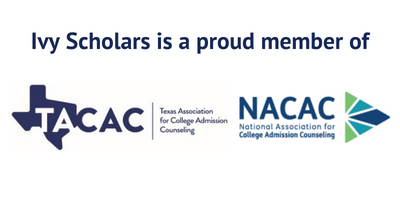College is expensive; extremely so. We’ve written about this before of course, as many of the students and parents we talk to are rightfully concerned about the very steep cost of a college education. These costs lead to most families needing to take out federal loans, though the exact amount can vary greatly. The new legislation passed by the US Government is going to greatly affect how student loans work (amongst many other things). This is going to impact both current and future borrowers at all levels of higher education. In this article, we’re going to cover these changes and their impacts, and how they might affect you and your education. Let’s get started!
Changes to Repayment Plans
When you take out a loan, then eventually you need to pay the money back; that’s how loans function. Student loans have generally had more flexibility for this, but the new bill greatly limits repayment options, cutting the current system down to only two tracks. These are:
- Standard repayment plan, where you pay a set amount every month until the entire loan is paid off.
- Repayment Assistance Plan (RAP), which replaces existing income-dependent repayment options, and which allows borrowers to make payments based on their and their spouses income.
The new RAP method of payment allows student loans to be forgiven after 30 years of consistent payments, up from 20-25 under current plans. There is a minimum payment of $10 per month under this plan, up from the current minimum of $0.
Note that this change is only for borrowers who take out loans going forward. While it was initially proposed that this would impact all borrowers, that was struck from the bill. Thus those of you with existing student loans will not be affected by these changes, only those who take out loans from this point on.
Another change to repayment options for loans are limits to deferment and forbearance options. Deferment is a process where borrowers could temporarily suspend repayments due to economic hardship or other circumstances. This will no longer be offered; borrowers from July 2025 onwards will not be able to defer payments on their loans at all.
Forbearance was a similar system which allows students to temporarily pause making payments on their loans due to economic hardship. The new limit is that loans may be in forbearance for only 9 months in any given 24 month period, greatly reducing the availability of this tool. Borrowers are given two chances to rehabilitate their loans instead of one; rehabilitation is where a loan may leave a state of default after a borrower makes a certain number of on-time payments.
Changes to Pell Grants
Pell Grants are not loans, but they are a key component of aid for many students. The new legislation puts some additional limits on how these are disbursed, and who will receive them. First, they set a new upper bound to income and assets for receiving a grant. If your student aid index (SAI) is at least twice the maximum Pell Grant given that year, then you are not eligible for the grant.
Students are also not eligible for Pell grants any term when they receive aid (from the federal government, states, their institution, or other private sources) which would cover their full cost of attendance. This is relatively straightforward, but may cause some issues for universities who say they meet full need, as they try to balance that with receiving Pell Grant money.
Finally, there is a slight expansion to Pell Grant availability, as there is a new program for Pell Grants for short-term workforce training programs. This is a good thing, and a worthwhile use of federal money, but not something which is applicable to many of the students we work with. The other barriers imposed means that the total number of Pell Grants issued per year is likely to shrink significantly.
New Caps on Total Loan Amounts
The bill places new limits on both how much students can borrow, and how much parents can borrow. Parents are now capped at $20,000 per child per year, with a total cap of $65,000 for each student. Caps for undergraduate student borrowers remain unchanged.
Graduate students are limited to $20,500 per year in loans, for a total of $100,000. Students in professional schools, such as law school and medical school, are instead capped at $50,000 per year, and a total loan cap of $200,000. There is a total cap placed on all federal loans a student receives, excepting Parent PLUS loans, of $257,500. Finally, the bill entirely eliminates Graduate PLUS loans.
These new limits are set to take effect on July 1 2026; students who currently have loans will be able to continue on their current plans. This, of all the changes we’ve covered, is liable to be the most disruptive to the most students.
First, undergraduates already faced difficulties borrowing enough money from the federal government to cover the rising costs of tuition. Parent PLUS loans and unsubsidized loans did cover some of the gap, but even these often feel short of helping students afford the full cost of tuition. These new caps will simply compound that.
Now, there is an argument to be made that the ease of accessing government loans is part of the reason college tuitions have exploded. It is unclear how accurate this line of thinking is, but that is the motivation for the bill. That said, it seems unlikely that college tuition will decline in response to this, especially with so many colleges depending on tuition dollars to remain operational. Instead, tuition rates are liable to stay the same, and students will have to find some way to close the gap.
This is likely to lead undergraduate students to need to seek out private loans. This is not ideal for several reasons; unlike federal loans, private ones often have higher interest rates, do not offer forbearance at all, and have no options for forgiveness. These lead to students needing to pay more money over a longer period, hurting their economic futures.
Graduate School and Loans
Graduate programs are hit even harder than undergraduate ones by this, especially master’s programs. These programs are just as expensive as undergraduate ones, though shorter, and offer far less aid. Schools often use master’s programs as a revenue source, relying on those tuition dollars far more than those of undergraduates, especially at private universities.
Now this might actually be a good thing. Many master’s programs are not worth the money (some certainly are, but many are simply an expensive and often unnecessary stepping stone before entering a PhD program). A lack of funding for these degrees may be painful to universities in the short term, but will probably be a good decision overall.
That said, this bill treats all masters programs equally, and some are quite good for students interested in a career (such as MBAs and engineering masters programs). Students interested in these programs will still have to fork over a lot of money, but now must either self-fund, or turn to private loans to make up the tuition gap left by the loss of federal loans.
For PhD programs, this may create problems as well. Most PhD students are funded by their universities however, though loans may be needed to fill the gaps. Overall, this is not good for PhD students, but it is not as overwhelmingly disruptive as it is for masters and professional degrees.
For professional degrees, this is absolutely terrible. Both law school and medical school are expensive and time consuming, and while the cap this bill places on loans is high, it still falls far short of covering tuition costs for most law and medical programs. This is especially a problem since most of these programs do not have any kind of financial aid available. Some do, yes, but these are by far the exception.
This is unlikely to drop the number of doctors and lawyers; medical schools still turn away far more students than they accept. Instead, this is likely to limit who gets to apply, and who chooses to attend, making medical school and law school a viable option solely for those students with the ability to self-fund their education. Private loans may again be able to close the gap, but this is still a major new barrier to education for some students.
How This Impacts You
If you are currently in college, this bill will likely only impact you if you are planning on attending graduate school or pursuing a professional degree. You may run into unexpected difficulties due to new repayment plans, but you won’t have many immediate problems from these changes.
Students planning on attending professional or graduate programs should start looking at financing options now. Financial aid for medical school is limited, but it does exist. PhD programs may be a better choice than a master’s in many fields. MBA programs may need to be delayed for a few years, so you can take time to earn and save before returning to complete one. This will require more planning and effort on your part, regardless of what your goals are.
Students who are currently preparing to apply to college are going to have a much more exciting time of it. You will have less access to federal aid, and tuition costs at colleges are showing no signs of decreasing. This means you will need to carefully craft a financial aid strategy, so you can be sure you will be able to attend the great colleges you get into.
Final Thoughts
While there is some logic behind the new student loans regulations, in large part we think they will make life more difficult for students and parents alike. We hope that this article has given you a thorough understanding of what these changes entail, and how they may impact you as you pursue your own education.
Navigating college financial aid is tricky at the best of times, and when things are shifting so rapidly it becomes even more of an adventure. That said, you don’t have to go it alone. Ivy Scholars employs a team of experts to stay on top of everything in the world of college admissions, so we are always able to offer you the best and most up-to-date advice. Don’t wait, schedule a free consultation today to learn how we can make your life easier.








